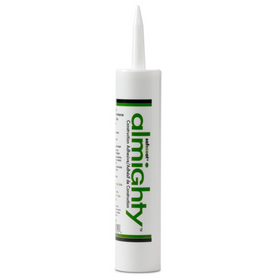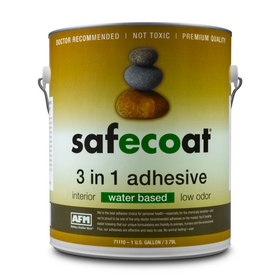
Building With Straw Bales: A Comprehensive Guide
Last Updated: Mar 20, 2025What if we told you that one of the best insulating materials for your home could be sourced for free from local farmers. That it is a 100 percent natural material with zero volatile organic compounds that could off-gas into your home? Sounds too good to be true? Before the days of fiberglass, cellulose, or spray foam insulation, most homes were completely un-insulated from the outside temperature. This reality led to frigid interior temperatures during the winter and unbearably hot home interiors in the summer. However, some families might have enjoyed homes with better insulation and thermal performance than even the most high-performance structures built today.
Straw bales have been used for decades as a quick and efficient way to build a home's walls. The first documented use of straw bales for a building was an 1896 Nebraska schoolhouse. Many people might think straw bale homes would decompose in just a couple of years. But, there are examples of straw bale homes that are well over 100 years old and show zero decomposition issues. Straw bales are great for high-performance insulation for any home. Besides being a natural and renewable material, straw bales also offer some of the highest R-values of all insulating materials. Below, we provide a complete guide on straw bale insulation.
Table of Contents
- What Is Straw Bale Insulation?
- What Types of Straw Bale Insulation Exist?
- What is the R-Value of Straw Bale Insulation?
- How Thick Does Straw Bale Insulation Need To Be?
- Are There Code Limitations Associated With Straw Bale Insulation?
- How Much Does Straw Bale Insulation Cost?
- Where Can Straw Bale Insulation Be Used?
- How Long Does Straw Bale Insulation Last?
- How To Finish Straw Bale Walls
- How To Install Straw Bale Insulation
- What Are The Pros of Straw Bale Homes?
- What Are The Cons of Straw Bale Homes?

What Is Straw Bale Insulation?
As its name implies, straw bale insulation is made from the leftover stalks of certain grain crops such as wheat, rice, and barley. For those not well-versed in crops, hay refers to baled grasses and weeds, whereas straw is strictly the leftover stalks of grains left in the fields post-harvest. Whereas hay is generally much finer and more prone to decomposition, the thick blades of straw are much more durable and offer improved insulation properties.
Because it is nutritionally empty, straw has little to no value as animal feed. Though it can (and should) be worked back into the soil to improve soil fertility, many farmers worldwide burn their leftover straw. In China, burning rice and wheat straw is a significant contributor to urban air pollution. Similarly, burning wheat straw in Mexico is shown to increase greenhouse gas emissions and accelerate climate change.
Instead of burning straw to prepare fields for subsequent harvests, straw bales could become an essential part of the transition to natural building alternatives. The Food and Agriculture Organization (FAO) of the United Nations estimates that about 800 to 1000 million tons of rice straw are produced per year, with similar volumes for wheat worldwide. Straw bales can be used for building walls or be manufactured into insulation panels for installation in other types of homes.
Straw is a natural and renewable material with excellent insulation properties. Compared to other types of insulation alternatives, straw bales have a much lower environmental impact. Preserving straw bales as home insulation or as walls can capture an enormous amount of carbon dioxide, thus helping combat global climate change.

What Types of Straw Bale Insulation Exist?
Straw bale homes are unique in that they have their insulation already built into the house walls. Straw bales are an average of 18 to 24 inches thick, meaning that straw bale homes have incredibly thick walls. When full-sized straw bales are used for walls, the structure might achieve an R-value of up to R-60, significantly higher than any other insulation alternative.
Another way to utilize straw bale insulation with full-sized bales sourced from local farmers is to use straw bales as in-fill in post and beam construction. Straw bales can be cut or trimmed to size with a simple chainsaw if you don't want massive 20-inch walls. Even a 10-inch straw bale in-fill for insulation would offer significantly higher insulation value than most other alternatives.
Today, many companies are beginning to produce prefab straw insulation panels. These panels are designed to fit in most existing homes, allowing homeowners to update their existing insulation. Eco Cocon is one company producing all-natural straw panels that offer excellent insulation properties.

What is the R-Value of Straw Bale Insulation?
Straw bales have an R-value of anywhere between R 2.38 per inch to R 0.94 per inch, which is similar to fiberglass and stone wool. It is slightly lower than cellulose and closed-cell spray foam insulation. The actual R-value of straw bale insulation will depend mostly on how tightly packed (or baled) it is. This tightness determines the amount of space and air pockets in between each blade of straw. Because of straw bale walls' thickness, when using full-sized bales, this type of construction or insulation can often offer R-values upwards of R-60.
How Thick Does Straw Bale Insulation Need To Be?
Let's take an average R-value of 2.0 per inch for straw bales. Find the recommended R-values for insulating your walls, ceilings, and attic according to your region. The ENERGY STAR program offers a helpful guide that you can find here. For example, if you need an R-16 insulation value for your walls, you should look for straw bale insulation panels that are 8-inches thick.

How Much Does Straw Bale Insulation Cost?
Straw bales can cost anywhere from $0 to $12 apiece. In some areas, farmers might give them away if they have an excess supply taking up space in their barns. Others might charge a nominal fee. If you are planning on hiring a contractor to build a full straw bale home, you can expect to pay an average of 10 to 12 percent higher costs. However, the energy savings due to the increased insulation performance should pay back that cost within a few years.

Where Can Straw Bale Insulation Be Used?
Straw bale insulation can be used in both walls, ceilings, and attics as long as some stucco or plaster sufficiently protects it. It can be added to home interiors or exteriors with walls if a water-proof plaster is used on top of the insulation. Because of issues with rotting, you cannot use straw bale insulation to insulate home foundations.

How Long Does Straw Bale Insulation Last?
Straw bale insulation, when adequately protected from rain and extended exposure to moisture, can easily last for decades or even centuries. There are living examples of 100-year old straw bale homes. Eco Cocon offers a 25-year warranty on their straw bale insulation panels. However, they mention that "as long as the installation standards are followed, an EcoCocon building should have a life expectancy that can be measured in centuries.
What Are The Cons of Straw Bale Homes?
On the downside, straw bale insulation offers a few drawbacks or situational disadvantages that should be considered.
- Straw bales and straw insulation are not water-resistant and need to be wholly protected from extended exposure to moisture to reduce the probability of decomposition;
- Straw bales require thick plaster or stuccos for both interiors and exteriors, which can increase the overall cost of building;
- Building codes in certain areas may not permit straw bale walls or straw bale insulation;
- Loose straw is a severe fire hazard. However, thickly packed straw bales might even be less prone to fire than regular wood. When encased by thick stucco or plaster, straw bale insulation poses no severe fire hazard for the home.
Tobias Roberts
Tobias runs an agroecology farm and a natural building collective in the mountains of El Salvador. He specializes in earthen construction methods and uses permaculture design methods to integrate structures into the sustainability of the landscape.














